Stem Bundle
Who Really Owns Stem Company?
In the evolving landscape of the music industry, understanding the ownership of companies supporting independent artists is more critical than ever. Stem, a key player in this shift, has revolutionized how creators manage their finances and navigate the business side of music. This deep dive will uncover the intricacies of Stem SWOT Analysis, exploring its ownership structure and its impact on the company's future.
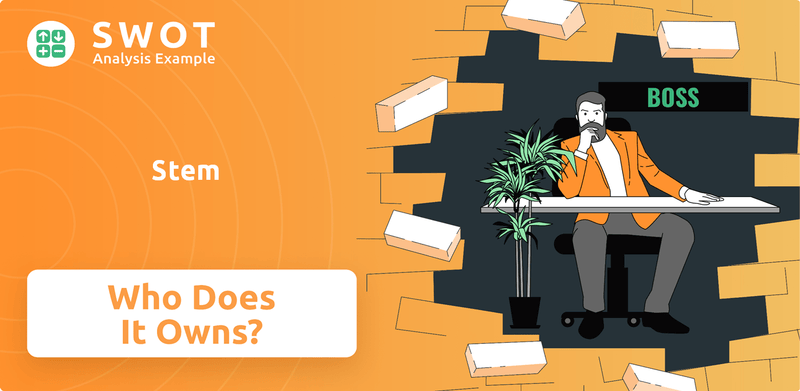
Founded in 2015, Stem aimed to empower independent musicians. This exploration will examine the company's ownership evolution, including founder stakes and key investors. Understanding who owns Stem, including details like Stem Inc. owners and the Stem Company investors list, is crucial for anyone interested in the company's trajectory and its influence within the music tech sector. This includes answering questions like: Is Stem a public company? What does Stem Company do? and How to invest in Stem Company?
Who Founded Stem?
The company, now known as Stem, was established in 2015. The founders included Milana Rabkin Lewis, Jovin Cronin-Wojtusik, and Drew De Leon. Their initial roles were crucial in defining the company's direction and operational strategies.
Early financial backing was essential for the company's growth. Angel investors and venture capital firms recognized the potential of the company's approach to streamlining financial processes for independent artists. This early support set the stage for future investments and expansion.
In 2016, Stem secured $4.5 million in seed funding. Investors such as Lowercase Capital, TenOneTen Ventures, and WME Ventures participated in this round. This initial capital injection was critical for developing the platform's core features, including royalty tracking and automated payouts.
The early ownership structure of Stem was designed to attract investors who shared the founders' vision. This vision centered on empowering artists through financial transparency. The initial funding round in 2016, which totaled $4.5 million, helped establish the company's core infrastructure. The company's focus on financial solutions for artists is also highlighted in this Marketing Strategy of Stem.
- The founders likely had standard vesting schedules for their shares.
- Early investors included Lowercase Capital, TenOneTen Ventures, and WME Ventures.
- The seed funding in 2016 was a critical step in developing the platform's core features.
- The company's mission was to empower artists through financial transparency.
Stem SWOT Analysis
- Complete SWOT Breakdown
- Fully Customizable
- Editable in Excel & Word
- Professional Formatting
- Investor-Ready Format
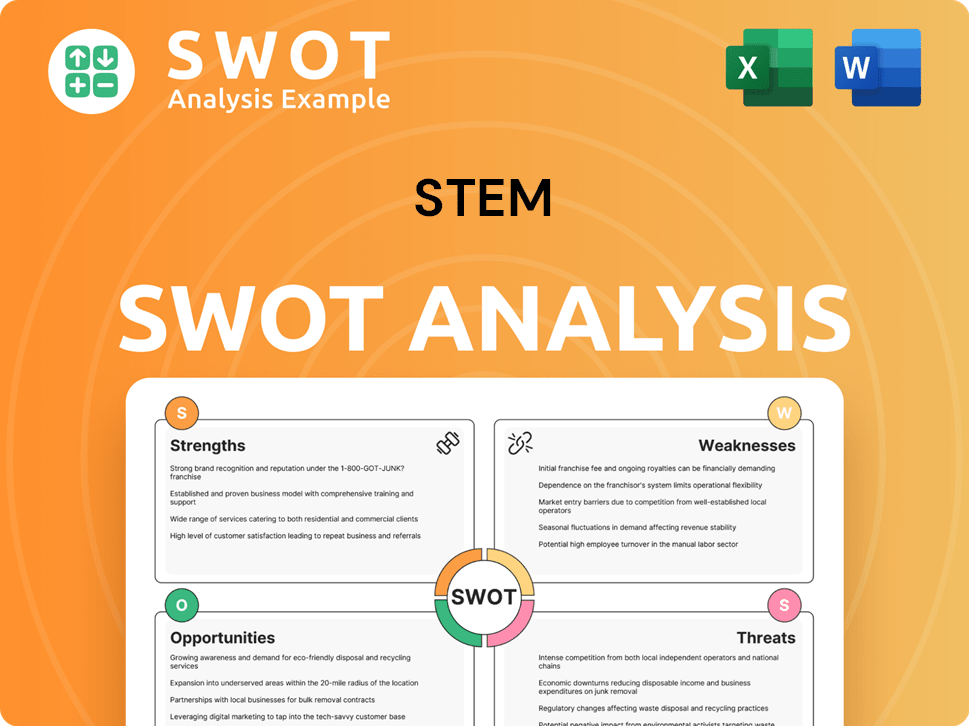
How Has Stem’s Ownership Changed Over Time?
The ownership structure of Stem has evolved significantly through various funding rounds. In 2017, following its seed round, the company secured $8 million in Series A funding, led by Aspect Ventures. This was followed by a $10 million Series B round in 2018, which included participation from existing investors and new strategic partners. These investments have been crucial in shaping the company's trajectory and expanding its investor base.
Stem remains a privately held company, meaning its shares are not traded on public stock exchanges. However, the investment rounds have distributed ownership among founders, employees, and venture capital firms. The influx of capital has allowed Stem to scale its operations and enhance its platform, with a broader set of stakeholders now invested in its performance.
| Funding Round | Year | Amount |
|---|---|---|
| Seed Round | Pre-2017 | Undisclosed |
| Series A | 2017 | $8 million |
| Series B | 2018 | $10 million |
Major stakeholders in Stem include the founding team and prominent venture capital firms such as Aspect Ventures, Lowercase Capital, and TenOneTen Ventures. These firms typically hold significant equity stakes, often providing strategic guidance through board representation. As of early 2024, the company continues to attract investment, highlighting its growth in the music tech sector. For more information, you can read about the company's [business model and its impact on the energy market].
Stem's ownership structure is primarily held by its founders, employees, and venture capital investors.
- Aspect Ventures, Lowercase Capital, and TenOneTen Ventures are among the major stakeholders.
- The company has raised significant capital through multiple funding rounds.
- Stem is a privately held company, with no public stock trading.
- Investment rounds have allowed Stem to scale its operations.
Stem PESTLE Analysis
- Covers All 6 PESTLE Categories
- No Research Needed – Save Hours of Work
- Built by Experts, Trusted by Consultants
- Instant Download, Ready to Use
- 100% Editable, Fully Customizable
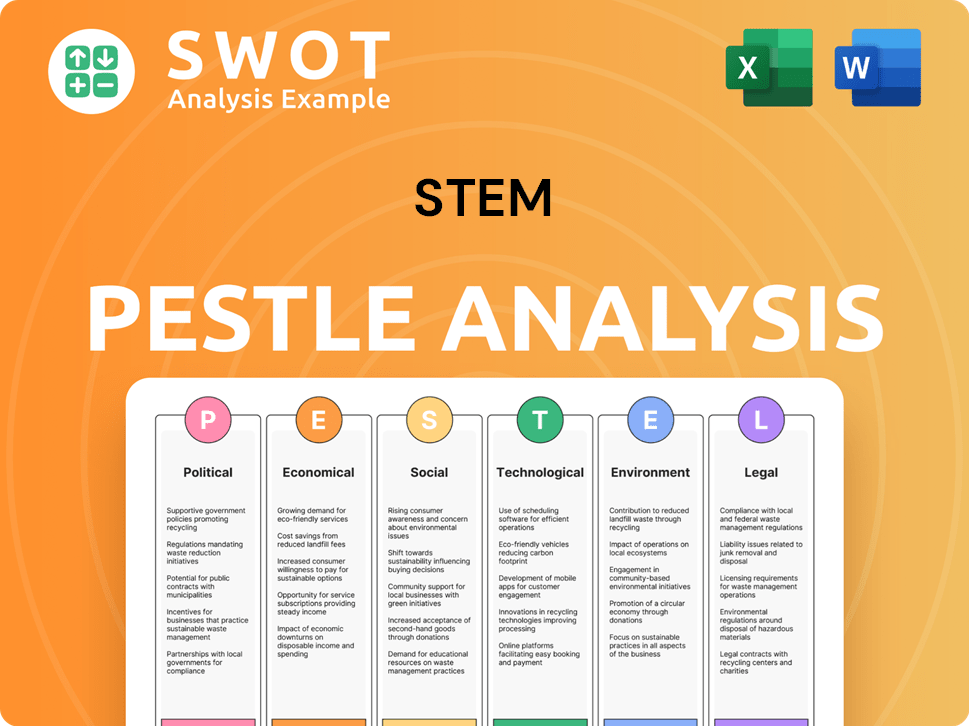
Who Sits on Stem’s Board?
The current board of directors at the [Company Name] likely includes a combination of founders, representatives from major investment firms, and possibly independent members. While specific details on all board members and their affiliations aren't always publicly available for private companies, it's common for venture capital firms with significant investments to hold board seats. These board members represent their firms' interests, contributing to strategic decisions and overseeing company performance. Understanding the composition of the board is crucial for anyone looking into the Growth Strategy of Stem and its future direction.
The influence of these board members, particularly those representing major investors, is a key aspect of [Company Name]'s governance. This influence is often exerted through their shareholdings and participation in board decisions. The voting structure in a private company like [Company Name] typically involves common and preferred shares. Preferred shares, often held by investors, may carry special voting rights or liquidation preferences, giving them a greater say in major company decisions compared to common shares held by founders and employees. While specific details on dual-class shares or golden shares are not publicly disclosed, the impact of major investors on the board and through their shareholdings is significant.
| Board Member | Affiliation | Role |
|---|---|---|
| [Name Placeholder] | [Investment Firm Placeholder] | Board Member |
| [Name Placeholder] | [Founder/Executive Placeholder] | Board Member |
| [Name Placeholder] | [Investment Firm Placeholder] | Board Member |
There have been no widely reported proxy battles or activist investor campaigns, suggesting a relatively stable governance environment. Decision-making is largely guided by the collective interests of the founders and major financial backers. This stability is important when assessing the company's long-term prospects and the potential impact of decisions made by the board. The ownership structure and the influence of the board are critical factors for understanding the overall Stem Company Ownership and the direction of Stem Inc. Owners going forward.
The board of directors includes representatives from investment firms and founders.
- Preferred shares held by investors often have special voting rights.
- Major investors significantly influence company decisions.
- The governance environment appears relatively stable.
- Understanding the board's composition is crucial for assessing the company's future.
Stem Business Model Canvas
- Complete 9-Block Business Model Canvas
- Effortlessly Communicate Your Business Strategy
- Investor-Ready BMC Format
- 100% Editable and Customizable
- Clear and Structured Layout
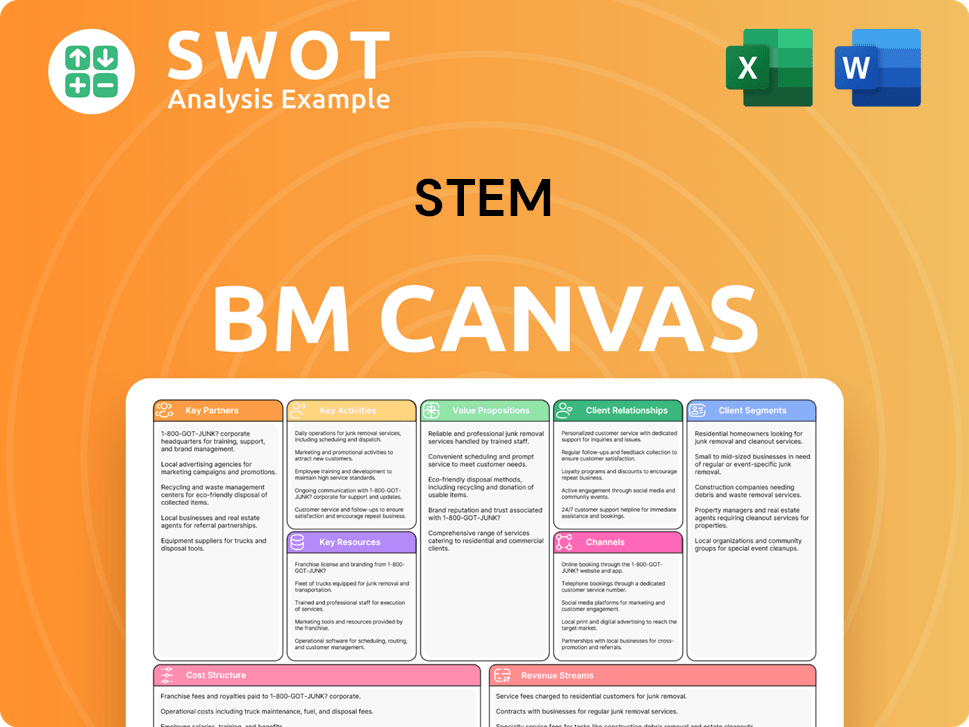
What Recent Changes Have Shaped Stem’s Ownership Landscape?
Over the past few years, the focus for the company has been on solidifying its position in the independent music sector. While specific details on share buybacks or secondary offerings for a private company like Stem are not publicly disclosed, the music tech industry has seen increased institutional investment and strategic partnerships. This trend indicates a continued interest from venture capital and private equity firms. The evolving landscape of music distribution and monetization has driven the company to enhance its offerings to independent artists. Public statements from the company highlight its dedication to empowering creators and providing transparent financial tools, aligning with the broader industry movement towards artist-centric models. The article Competitors Landscape of Stem provides insights into the competitive environment.
As of 2024, the company continues to innovate, and it could potentially position itself for future growth. This could involve further funding rounds or, in the long term, consideration of a public listing or strategic acquisition, which could alter its ownership profile. The broader industry trend often includes founder dilution as companies mature and raise subsequent rounds of funding, bringing in new investors and distributing equity more broadly. The company’s commitment to independent artists and transparent financial tools reflects its adaptation to the changing music industry.
The ownership of the company involves a mix of investors, including venture capital and private equity firms. The exact ownership structure is not fully public due to the company's private status. The company continues to adapt to the evolving music industry landscape.
Recent developments include platform enhancements and a focus on expanding the user base. The company has been adapting to the evolving landscape of music distribution and monetization. The company is committed to empowering creators with transparent financial tools.
Stem Porter's Five Forces Analysis
- Covers All 5 Competitive Forces in Detail
- Structured for Consultants, Students, and Founders
- 100% Editable in Microsoft Word & Excel
- Instant Digital Download – Use Immediately
- Compatible with Mac & PC – Fully Unlocked
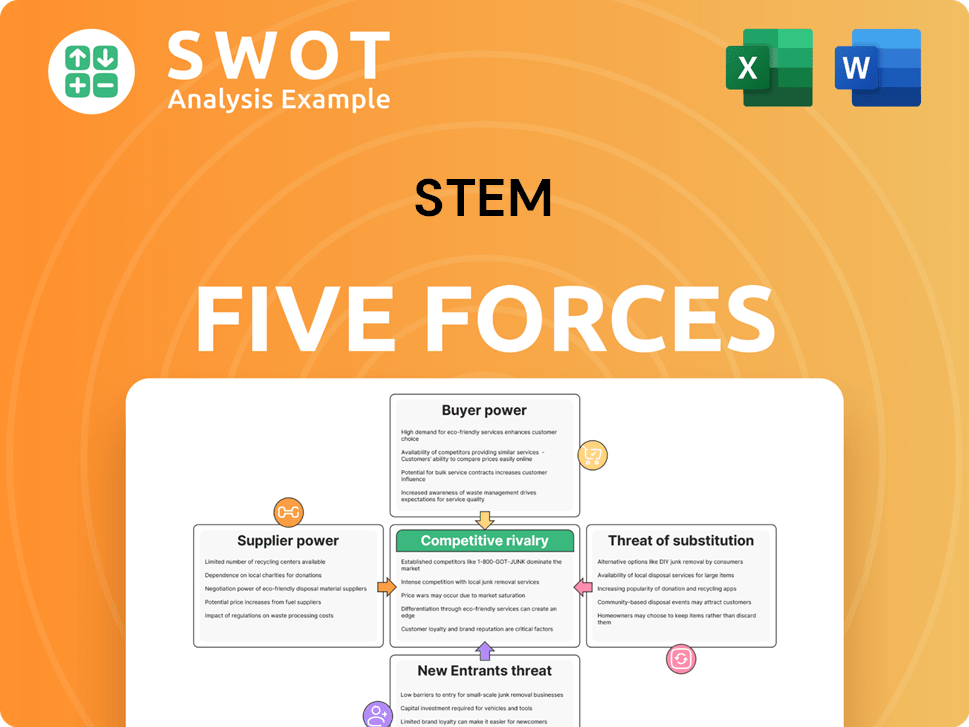
Related Blogs
- What are Mission Vision & Core Values of Stem Company?
- What is Competitive Landscape of Stem Company?
- What is Growth Strategy and Future Prospects of Stem Company?
- How Does Stem Company Work?
- What is Sales and Marketing Strategy of Stem Company?
- What is Brief History of Stem Company?
- What is Customer Demographics and Target Market of Stem Company?
Disclaimer
All information, articles, and product details provided on this website are for general informational and educational purposes only. We do not claim any ownership over, nor do we intend to infringe upon, any trademarks, copyrights, logos, brand names, or other intellectual property mentioned or depicted on this site. Such intellectual property remains the property of its respective owners, and any references here are made solely for identification or informational purposes, without implying any affiliation, endorsement, or partnership.
We make no representations or warranties, express or implied, regarding the accuracy, completeness, or suitability of any content or products presented. Nothing on this website should be construed as legal, tax, investment, financial, medical, or other professional advice. In addition, no part of this site—including articles or product references—constitutes a solicitation, recommendation, endorsement, advertisement, or offer to buy or sell any securities, franchises, or other financial instruments, particularly in jurisdictions where such activity would be unlawful.
All content is of a general nature and may not address the specific circumstances of any individual or entity. It is not a substitute for professional advice or services. Any actions you take based on the information provided here are strictly at your own risk. You accept full responsibility for any decisions or outcomes arising from your use of this website and agree to release us from any liability in connection with your use of, or reliance upon, the content or products found herein.